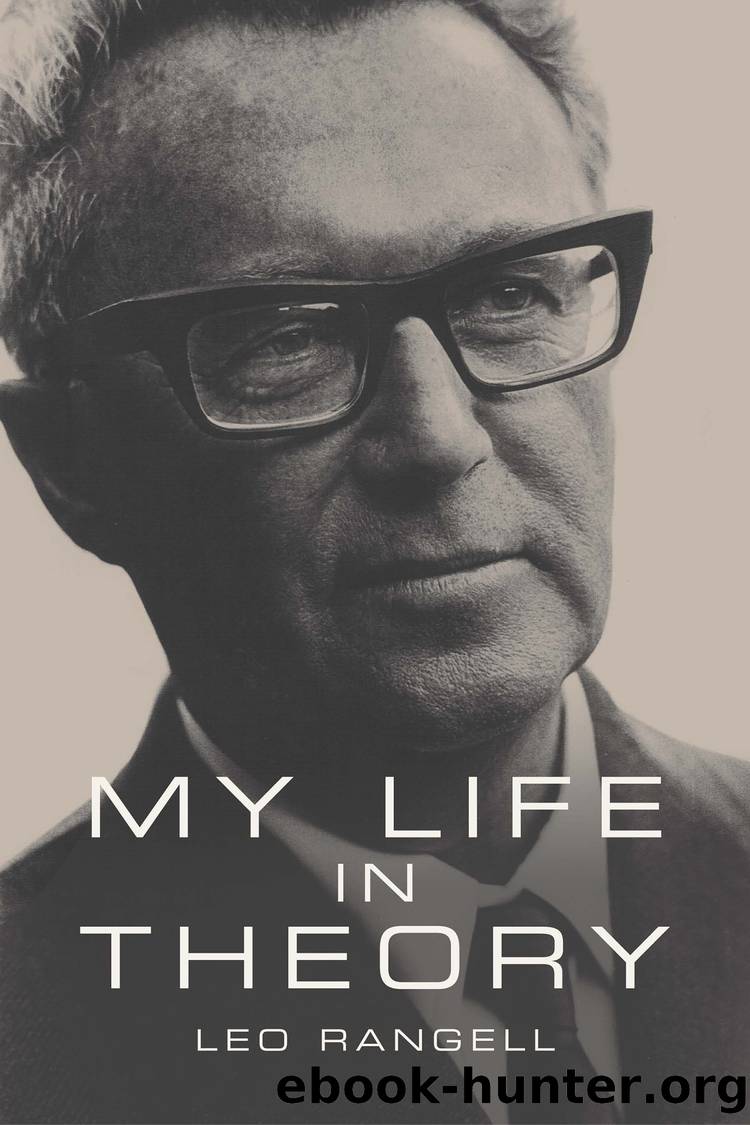My Life in Theory by Leo Rangell

Author:Leo Rangell [Rangell, Leo]
Language: eng
Format: epub
Publisher: Other Press
Published: 2021-04-20T00:00:00+00:00
REFLECTIONS ON THEORY FROM THE VIENNA CONGRESS
Unexpected digressions such as this last one into the details of the Vienna Congress are not necessarily deflections from our study of the history of psychoanalytic theory. In fact they not only bring some order into a twisted maze of affects, but may add to theoretical clarity as well. The issues raised at the charged Vienna Congress, and their affective and scientific ramifications, offer us the possibility of looking a little further back to untangle some thorny knots in the development of theory: namely, the Freudian versus Kleinian struggles, the relationship between child and adult analysis, and the debate over psychoanalysis versus psychotherapy. The affective and theoretical issues that came up at the Congress can both be seen to have played direct and not insignificant roles in these polarities, all of which have been prominent in the course of theoretical history.
The affective storms that raged in Vienna energized these divisive issues, and exerted pressure toward their solution. The Hampstead application touched upon them all. Moreover, the three theoretical polarities I have just named, all of universal analytic significance, can be seen to be related to the goings on in the British Society from the twenties through the decades in which psychoanalysis consolidated and then spread the world over. Freudâs discoveries were first introduced to the English-speaking world by Ernest Jones in London. This led to the formation of the British Psychoanalytic Society, which quickly became a locus not only of prolific creativity but also of the most significant theoretical debate to divide the young science.
When Melanie Klein established roots in London beginning in 1925, the psychoanalytic body experienced its first major sustained split in theoretical orientation. This became the subject of much scientific debate and many high feelings, and eventually it led to a solution that would have widespread effects and influence. Looking back, the well-known âarrangementâ of three theoretical and educational tracks under one administrative umbrella may well have served as a preludeâpossibly even a modelâfor the later theoretical pluralism that flourished in opposition to a unification of theory that could never be achieved after that first internal division. The effect of this on the psychoanalytic body was different from the earlier disagreements that had led the first serious dissenters to find a home outside of the psychoanalytic field rather than within it. Modern studies by King and Steiner (1991) and Baudry (1994) have documented both the efforts made toward a meeting of the minds and the obstacles that prevented this, as the leading theoreticians in London sought for a common understanding while the bombs fell on their city. The series of Extraordinary Business Meetings and Controversial Discussions attest to the earnestness, intensity, and devotion of this Society. That theoretical integration and a resulting unification could not be achieved is a testament to the fierce individuality of its creative members, as well as to the strength of the drives, and the tenacity and power of formed human personalities.
In addition to the three-way theoretical
Download
This site does not store any files on its server. We only index and link to content provided by other sites. Please contact the content providers to delete copyright contents if any and email us, we'll remove relevant links or contents immediately.
I Have Something to Say by John Bowe(3395)
Einstein: His Life and Universe by Walter Isaacson(1753)
What Happened to You? by Oprah Winfrey(1665)
Doesn't Hurt to Ask by Trey Gowdy(1542)
Solutions and Other Problems by Allie Brosh(1208)
Disloyal: A Memoir by Michael Cohen(1148)
American Dreams by Unknown(1117)
Don't Call it a Cult by Sarah Berman(957)
Infinite Circle by Bernie Glassman(953)
The Silent Cry by Cathy Glass(943)
Group by Christie Tate(940)
Talk of the Ton by unknow(936)
Home for the Soul by Sara Bird(936)
Before & Laughter by Jimmy Carr(772)
Total F*cking Godhead by Corbin Reiff(768)
Severed by John Gilmore(767)
Searching for Family and Traditions at the French Table by Carole Bumpus(746)
Ghosts by Dolly Alderton(743)
The Book of Hope by Jane Goodall(732)
